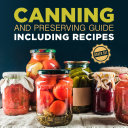Introduction to Food Engineering
Paul Singh
Dec 2012 · Academic Press
4.0star
1 reviewreport
eBook
318
Pages
family_home
Eligible
info
reportRatings and reviews aren’t verified Learn more
About this eBook
Introduction to Food Engineering deals with the engineering concepts in food processing employing a unit operations approach. The book focuses on mass and energy balances, fluid flow, energy utilization, refrigeration, heat transfer, food freezing, evaporation, dehydration, and psychometrics. It is in line with primary topics recommended by the Institute of Food Technologists of the U.S.A. The text reviews some concepts related to food science such as the equation of state and perfect gas law, laws of thermodynamics, and conservation of mass. The book also discusses the transport of liquid foods and the three types of utilities used in food processing: 1) steam generation and utilization; 2) natural gas utilization; and 3) electric power utilization. The text explains how to determine the properties of food and the different approaches that can be used to obtain the food's thermal properties prior to using the proper heat-exchange equipment. Food preservation also involves freezing (direct or indirect contact systems), evaporation, dehydration, and psychometrics (involving thermodynamic properties of gas-vapor mixtures). The book is suitable for nutritionists, food technologists, advanced under-graduate and beginning graduate students in food science and technology, and professionals whose works are in the food processing, research, and preservation industry.
Ratings and reviews
4.0
1 review
Rate this eBook
Tell us what you think.
Reading information
Smartphones and tablets
Install the Google Play Books app for Android and iPad/iPhone. It syncs automatically with your account and allows you to read online or offline wherever you are.
Laptops and computers
You can listen to audiobooks purchased on Google Play using your computer's web browser.
eReaders and other devices
To read on e-ink devices like Kobo eReaders, you'll need to download a file and transfer it to your device. Follow the detailed Help Centre instructions to transfer the files to supported eReaders.





